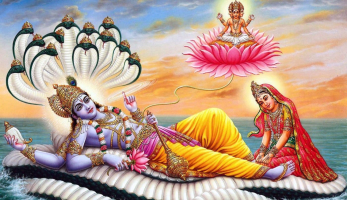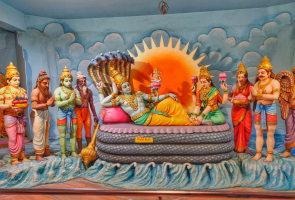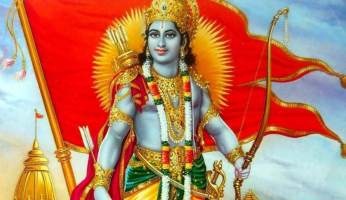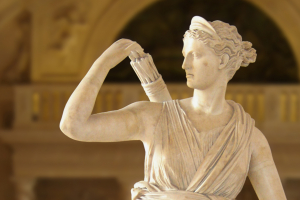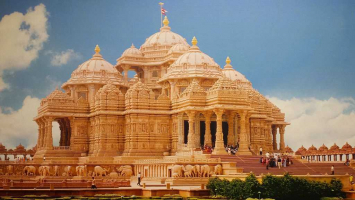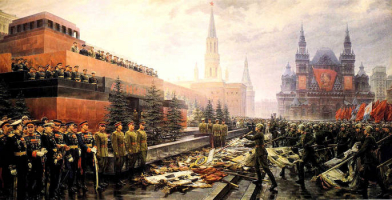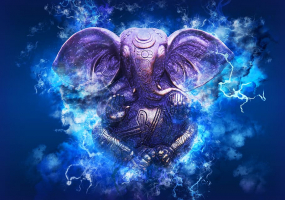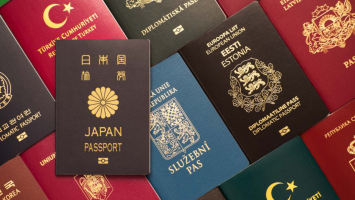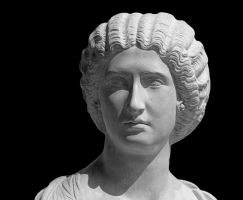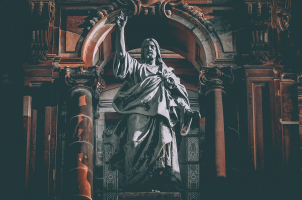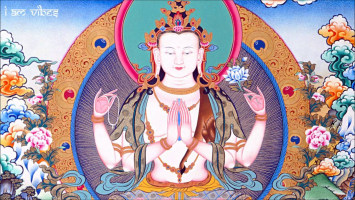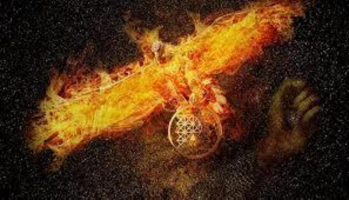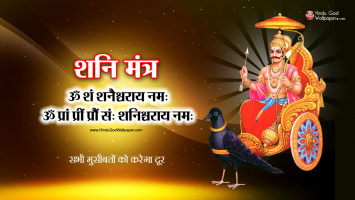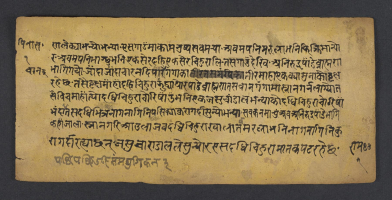Top 9 Most Powerful Hindu Goddesses
The greatest force of the cosmos is represented by both masculine and feminine deities in Hinduism, and all of the major deities have both male and female ... read more...equivalents. Shakti, the feminine wellspring of power in the universe, is embodied by Hindu goddesses. They are incredibly revered and strong, and they have a major impact on how the cosmos is made, preserved, and destroyed. Here is a list of the most powerful Hindu goddesses who are the source of this power.
-
Durga is one of the most powerful Hindu goddesses, worshipped as a principal aspect of the mother goddess Mahadevi. She is linked to defense, sturdiness, motherhood, devastation, and battles.
The central theme of Durga's narrative is the triumph of good over evil as she battles evils and demonic forces that threaten dharma, prosperity, and peace. For the sake of the oppressed's freedom, Durga is said to release her divine fury against the wicked, which involves destruction in order to strengthen creation. As a motherly deity, Durga is frequently portrayed as a stunning woman riding a lion or tiger, holding many weapons in her many arms, and frequently vanquishing demons. She is highly revered by adherents of the goddess-centered cult known as Shaktism, as well as by followers of Shaivism and Vaishnavism.Devi (the Goddess) is revered in the two most major Shaktism texts, the Devi Mahatmya and the Devi Bhagavata Purana, as the original creator of the cosmos and the Brahman (ultimate truth and reality). She is one of the five comparable deities in the Panchayatana Puja of the Hindu Smarta religion.
There is a sizable fan base for Durga in several nations, including Bangladesh, Nepal, and India. Following the spring and fall harvests, she is primarily venerated, particularly during the festivals of Durga Puja, Durga Ashtami, Vijayadashami, Deepavali, and Navaratri.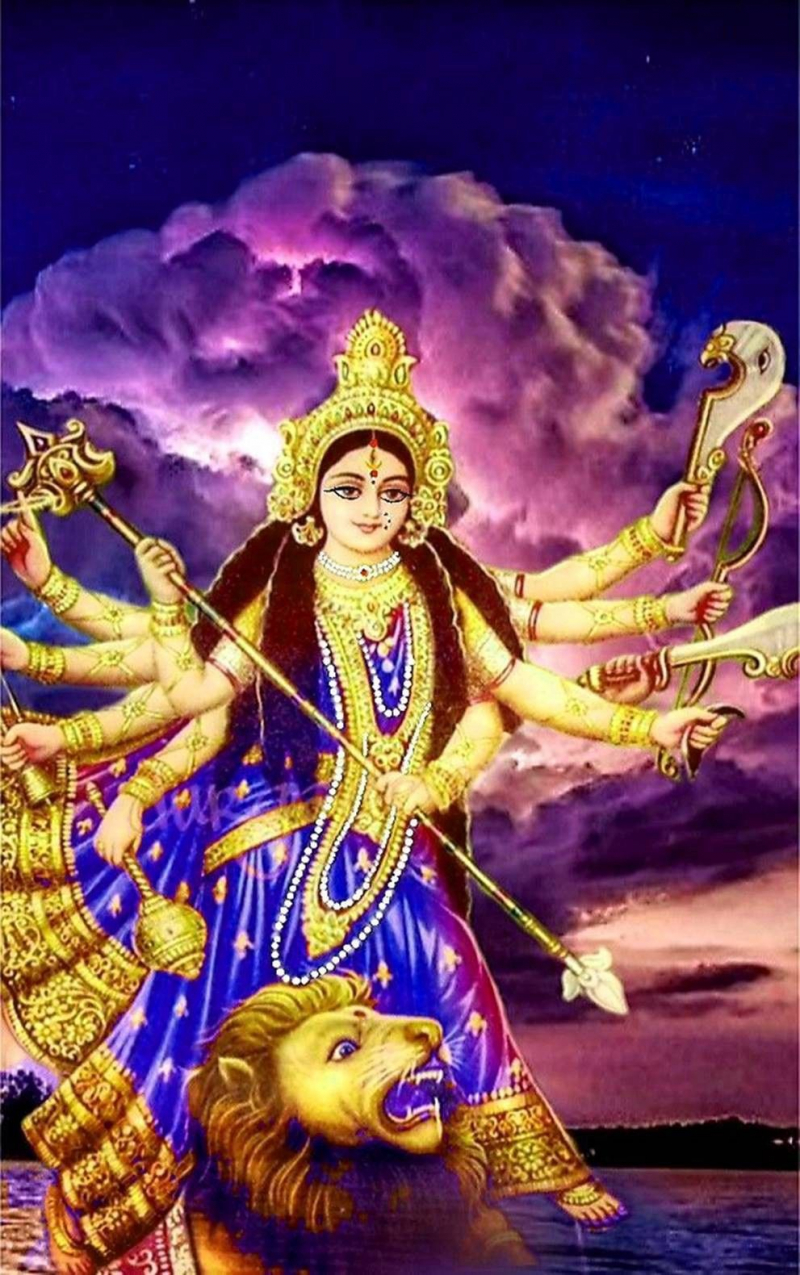
Photo: Pinterest 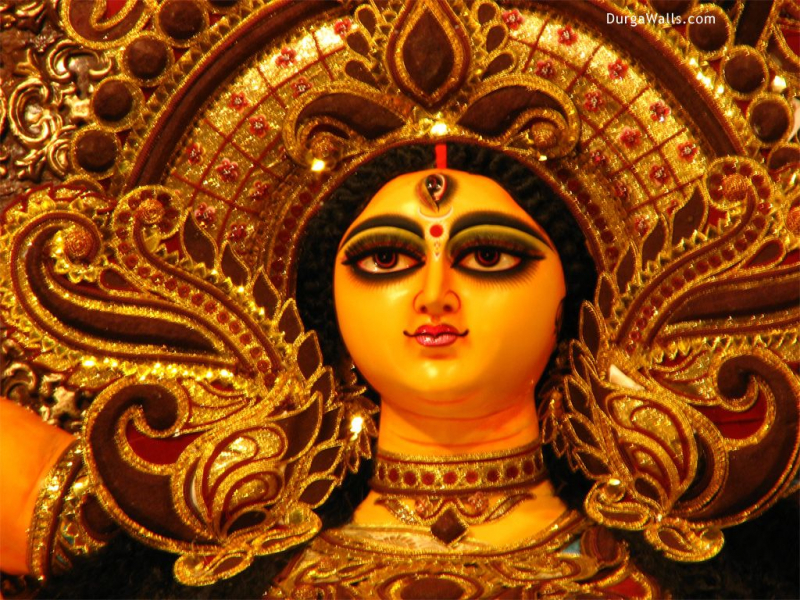
Photo: Pinterest - Durga -
The Hindu goddess Parvati represents strength, vitality, sustenance, peace, love, beauty, devotion, and motherhood. She is a physical incarnation of Mahadevi in all of her fullness. She is highly famous for her roles as Kali and Durga. She is the main goddess in Shaivism and one of the main deities of the goddess-oriented cult known as Shaktism. She is a member of the Tridevi, which also includes Lakshmi and Saraswati.
Shiva's wife Parvati is a Hindu deity. She is the reincarnation of Sati, Shiva's first wife who committed herself by self-immolation during a yajna (fire sacrifice). The mountain king Himavan and queen Mena's child is Parvati. Ganesha and Kartikeya are Hindu deities whose mother is Parvati. She was also mentioned in the Puranas as the sister of the god of preservation Vishnu and the river goddess Ganga. She is seen by Shaivites as the divine force that exists between a man and a woman, similar to the energy of Shiva and Shakti. Woman is revered by Vaishnavites as Vishnu Vilasini, also known as "she who dwells on Vishnu," according to the Mahishasura Mardini Stotram.
Although Parvati is typically shown as a kind and loving mother goddess, she is also linked to a number of terrifying personas that she assumes to battle evil and demons, including Durga, Kali, the ten Mahavidyas, and Navadurgas.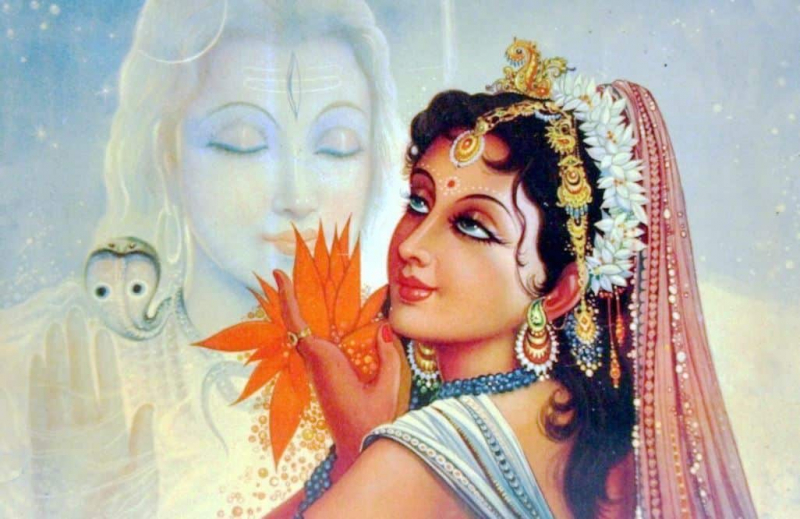
Photo: Vedicfeed - Goddess Parvati 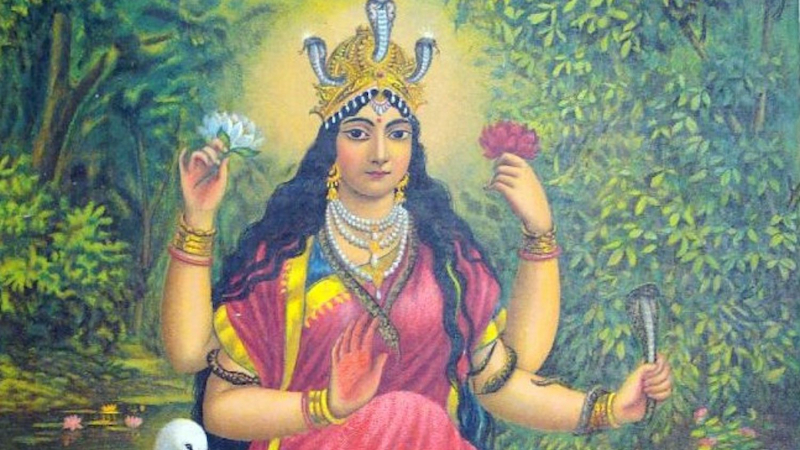
Photo: Learn Religions - Goddess Parvati -
One of the main deities in Hinduism is Lakshmi. She is connected to Maya and is the goddess of money, fortune, power, beauty, fertility, and prosperity ("Illusion"). She is one of three Hindu deities known as the Tridevi, along with Parvati and Saraswati.
Lakshmi is revered as the Mother Goddess' element of prosperity in the goddess-centered Shaktism. Lakshmi is the Supreme Goddess in the Vaishnav sect and helps the Hindu god Vishnu create, guard, and modify the cosmos. She is also her husband's consort and the divine spirit (shakti) of the faith. She is a very important character in Sri Vaishnavism, a religion that holds that devotion to Lakshmi is necessary to achieve Vishnu. Lakshmi always traveled with Vishnu whenever he took on an earthly form, such as Sita, Radha, or Rukmini for Vishnu's incarnations Rama and Krishna, respectively. The Ashtalakshmi, Lakshmi's eight well-known incarnations, represent the eight main sources of prosperity.
In Indian art, Lakshmi is represented as a gracefully attired, gold-colored goddess who bestows riches, sitting or standing in the padmasana pose atop a lotus throne, clutching a lotus in her palm to signify fortune, self-knowledge, and spiritual emancipation.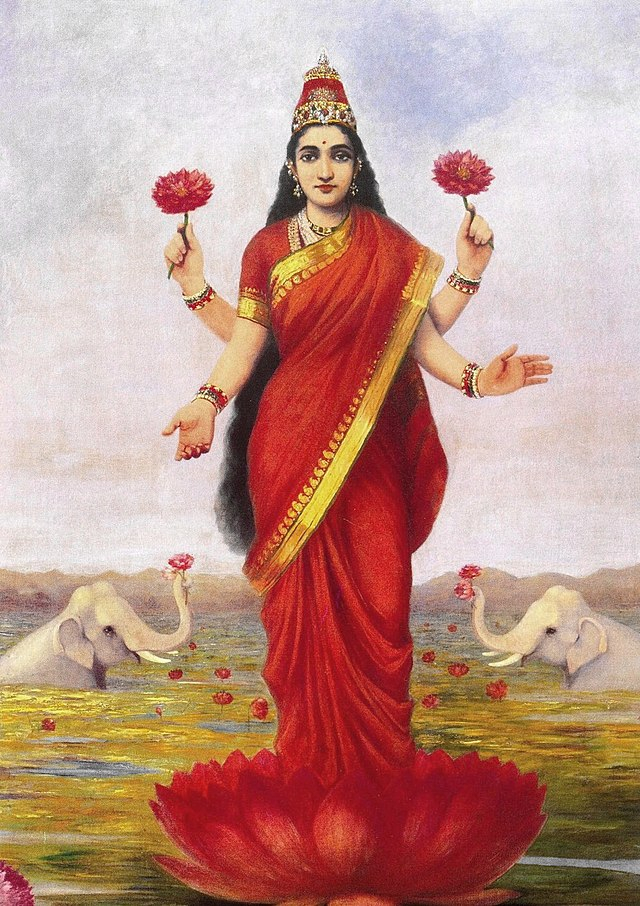
Photo: Wikipedia - Lakshmi 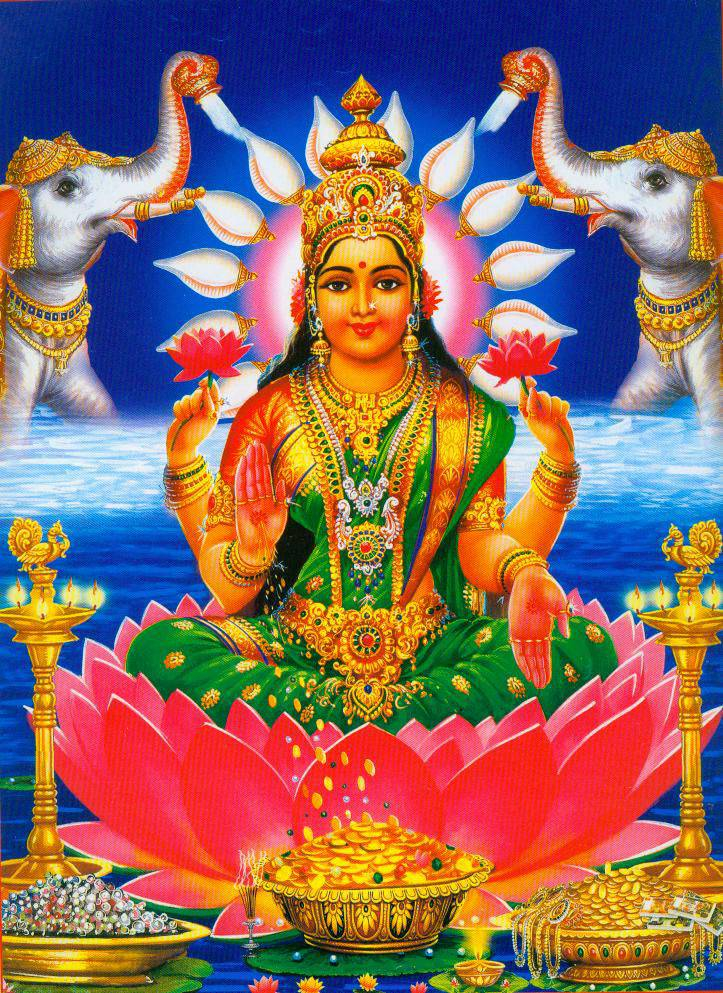
Photo: cifi.it - lakshmi -
Saraswati is one of the most powerful Hindu goddesses, the goddess of knowledge, music, art, speech, wisdom, and learning. Together with the goddesses Lakshmi and Parvati, she is one of the Tridevi.
The Rigveda has the oldest recorded reference of Saraswati as a goddess. She has continued to be an important goddess from the Vedic era to the present day of Hindu religions. Her four arms are typically represented carrying a book, a rosary, a water container, and a vena, a musical instrument. In Hinduism, each of these objects has a symbolic value. On the day of Basant Panchami, which is also the first day of spring, Saraswati Puja is performed. Early in the morning, devotees visit her temples in the hopes of receiving wisdom and enlightenment.In her honor, some Hindus observe the festival of Vasant Panchami, which falls on the fifth day of spring and is also known as Saraswati Puja and Saraswati Jayanti in many parts of India. To commemorate the occasion, some Hindus teach young children how to write the alphabet on that day. Along with some Buddhist sects, followers of the Jain religion from west and central India also hold the goddess in high regard.
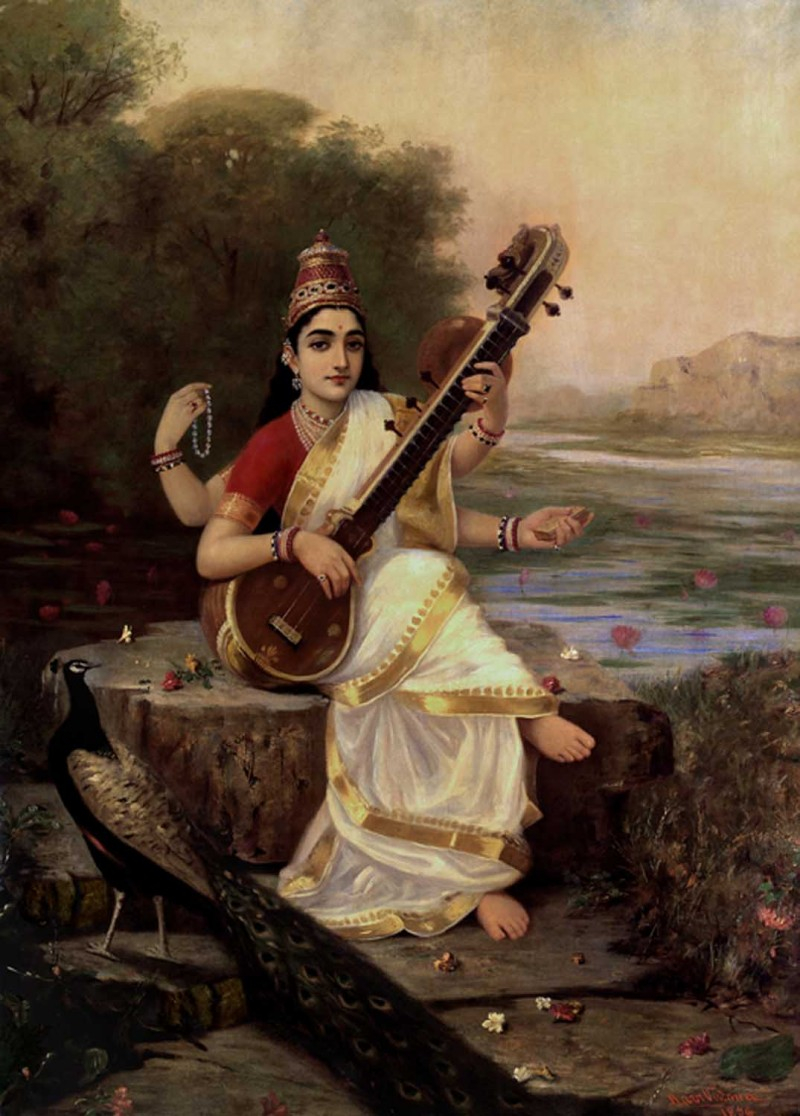
Photo: ArtZolo.com - Goddess Saraswathi 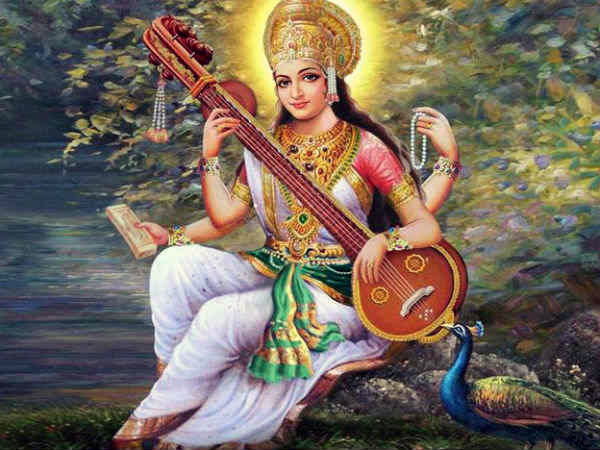
Photo: Boldsky.com - Saraswati -
In Shaktism, Kali, a Hindu goddess, is revered as the embodiment of all power, time, destruction, and change. She is viewed in this religion as a fierce manifestation of Mahadevi, the greatest power or ultimate reality. As a result, Kali is portrayed as a ferocious and irate goddess holding a bowl, a knife, and a garland of skulls in her hands. She had to slash Raktabeech during the conflict, fill her bowl with his blood, and drink it. She persisted in doing so, turning violent and destructive as a result.
The moment Kali erupted from Shiva is when she first made an appearance. She is revered as the mother of all living things and the pinnacle of Shakti's manifestations. Shiva, her husband, sat down under her feet to soothe her and shield the universe from her rage. She realized her mistake and bit her tongue out of embarrassment. As a result, Kali is depicted biting her tongue, and Lord Shiva is seen resting at her feet in her iconography. Over time, devotional groups and Tantric sects have referred to Kali in many ways as the Divine Mother, Mother of the Universe, and the Principal Energy Adi Shakti. She is also revered by Tantric and Shakta Hindu sects as the ultimate reality or Brahman. Additionally, she is revered as the celestial guardian and the one who grants moksha, or liberation.
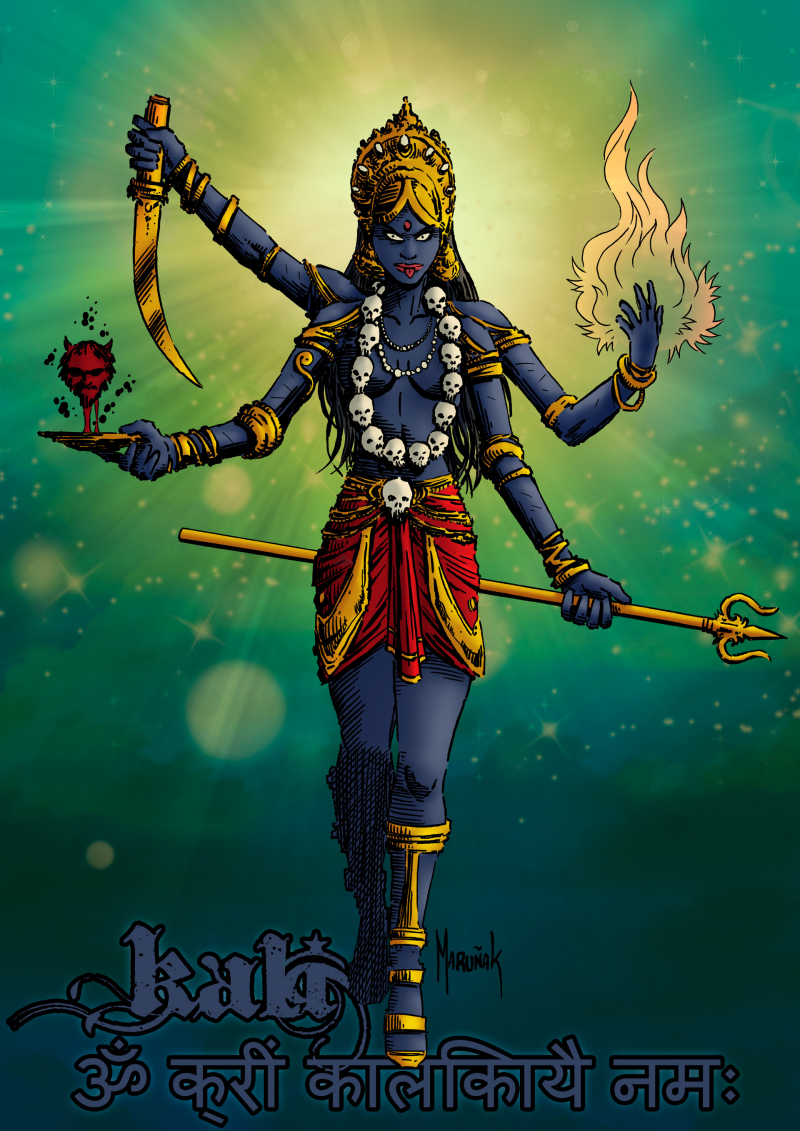
Photo: ArtStation - Goddess Kali 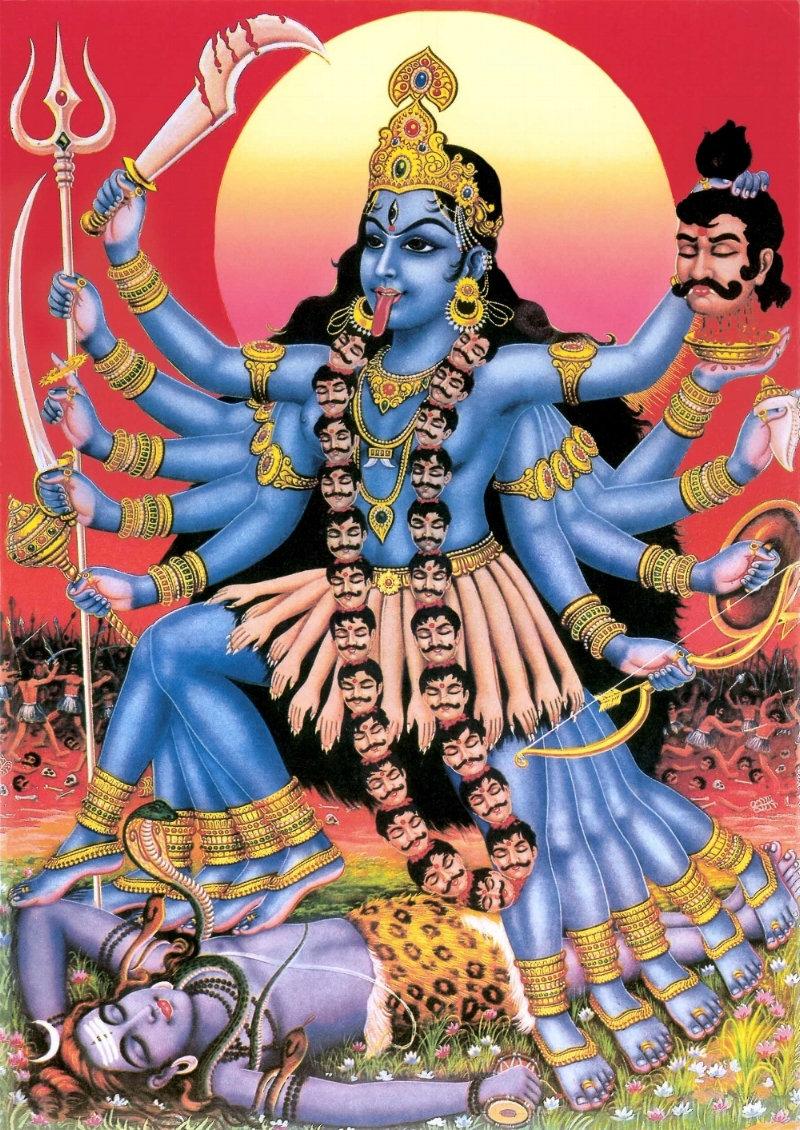
Photo: The Kali Collective - Goddess Kali -
The female protagonist of the Hindu epic Ramayana is the goddess Sita. She is seen as a variation of Vishnu's consort, Lakshmi, and is the spouse of Rama, the god Vishnu's incarnation. She is also the main deity in Hindu religions that emphasize Rama. Sita is renowned for her commitment, selflessness, bravery, and purity. She is one of Nepal's 17 Rastriya Bibhuti, or national heroes.
Sita is raised as King Janaka of Videha's adopted daughter while being referred to as the daughter of Bhmi (the earth). In her youth, Sita chooses to wed Rama, the prince of Ayodhya, in a swayamvara. She follows her husband to his kingdom after the swayamvara, but subsequently decides to go with him and her brother-in-law Lakshmana when he is exiled. She is taken hostage by Ravana, the Rakshasa king of Lanka, while the group is in exile and living in the Dandaka forest. She is held captive in Lanka's Ashoka Vatika garden till Rama frees her and kills her kidnapper. In certain versions of the story, Rama requires Sita to go through an ordeal of fire called Agni Pariksha to demonstrate her purity before he can accept her, which for the first time infuriates Rama's brother Lakshmana.
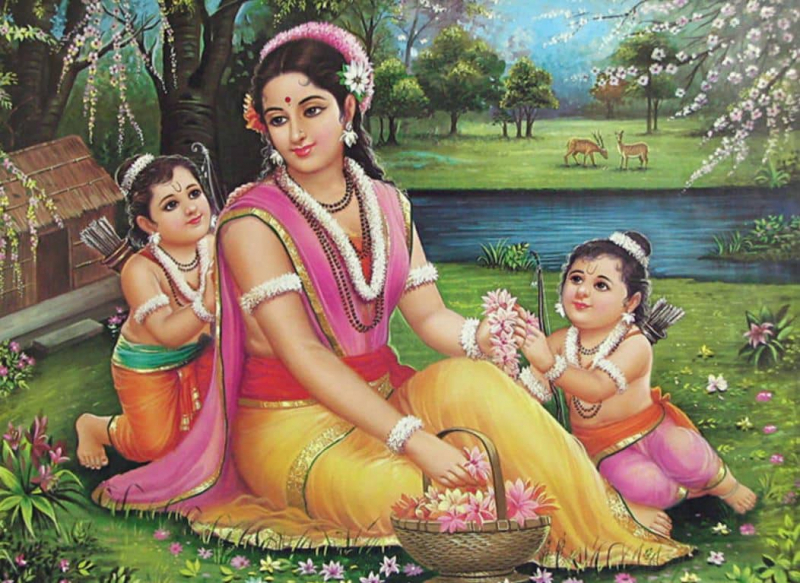
Photo: Vedicfeed - Goddess Sita 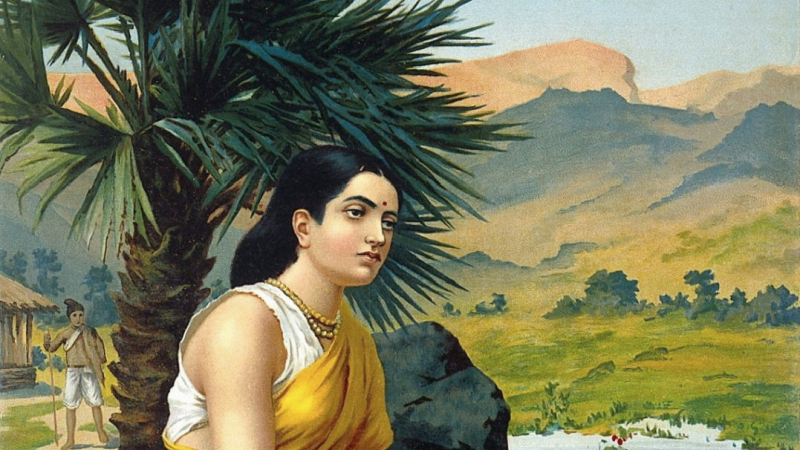
Photo: Quora - Goddess Sita -
Hindus revere Ganga, the river Ganges' personification, as the goddess of atonement and purification. Ganga, who goes by various names, is frequently pictured as a fair, lovely woman riding a wonderful crocodile-like animal known as the Makara. The Rigveda has some of the first references to Ganga, referring to her as the holiest of the rivers. Her tales are primarily found in post-Vedic literature like the Ramayana, Mahabharata, and Puranas.
She is referred to in the Ramayana as the firstborn of Himavat, the Himalayas' representative, and the sister of the mother goddess Parvati. Other sources, however, refer to her ancestry as coming from the preserver god Vishnu. Legends center on her descend to Earth, which was facilitated by the god Shiva with the help of a royal sage named Bhagiratha. In the epic Mahabharata, Ganga is the union of the Kuru king Shantanu and the hero Bhishma's mother.
In Hinduism, Ganga is revered as humanity's mother. In order to bring their ancestors' souls (purified spirits) closer to moksha—the release from the cycle of life and death—pilgrims immerse their ashes in the Ganga river. At various holy locations along the banks of the Ganges, including Gangotri, Haridwar, Prayagraj, Varanasi, and Kali Ghat in Kolkata, festivals like Ganga Dussehra and Ganga Jayanti are observed in her honor. During the Loy Krathong holiday in Thailand, Ganga is revered with Gautama Buddha.
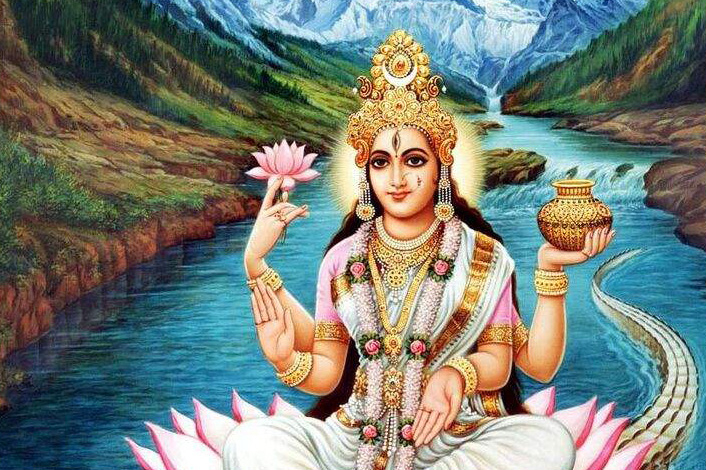
Photo: Hindu American Foundation - Ma Ganga 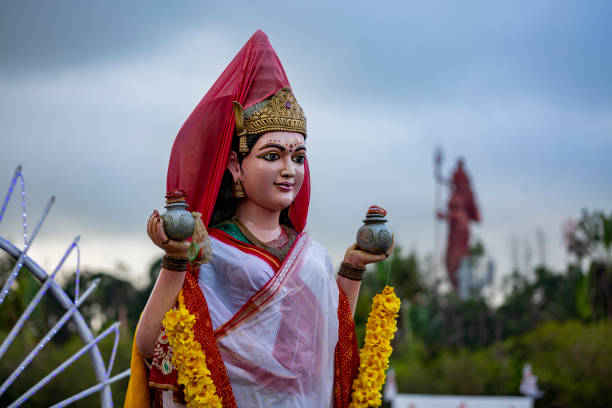
Photo: iStock - Ganga Goddess -
Hinduism refers to the heavenly cow goddess Kamadhenu as the mother of all cows. She is frequently described as the mother of other cattle and is a miracle cow of abundance who gives her master anything he desires. She is typically pictured in iconography as a white cow with a feminine head and breasts, bird wings, and a peafowl tail, or as a white cow with other deities housed inside of her. It is not customary to worship Kamadhenu as a separate deity. Instead, she is revered by Hindus who view cows as her earthly incarnations and venerate them as such.
Numerous different tales of Kamadhenu's birth are found in Hindu scriptures. Others claim she is the daughter of the creation god Daksha and the wife of the sage Kashyapa, while others claim she came from the swirling of the cosmic ocean. Other scriptures claim that Kamadhenu was held by either Jamadagni or Vashista, two legendary sages, and that any rulers who attempted to seize her from the sage ultimately suffered terrible repercussions. In addition to being able to produce ferocious warriors to defend her sage-master, Kamadhenu plays a crucial function in providing milk and milk products for use in his oblations. She is also said to reside in Patala, the underworld, and Goloka, the world of the cows, in addition to the sage's hermitage.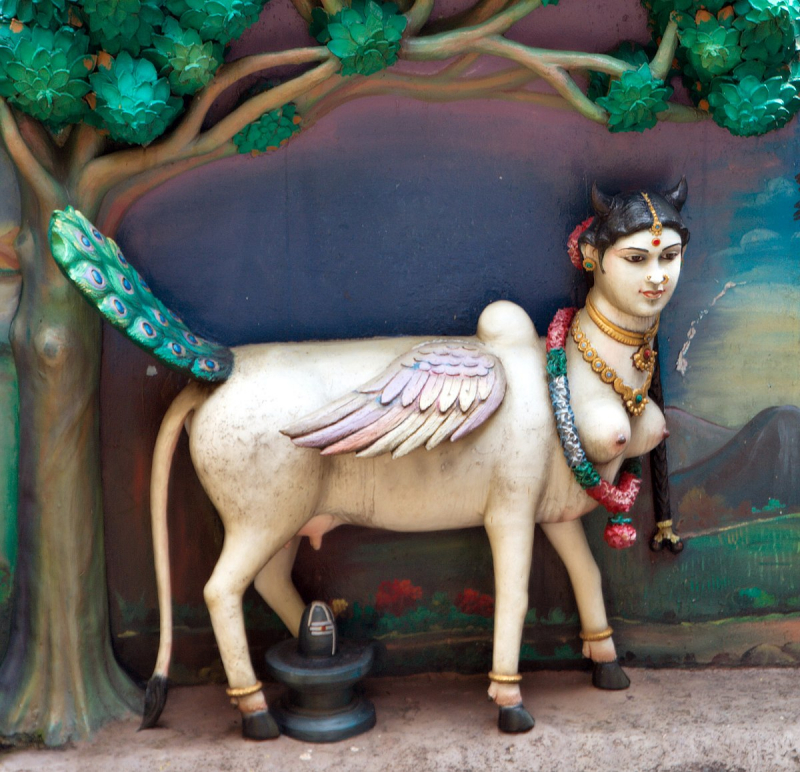
Photo: Wikipedia - Kamadhenu 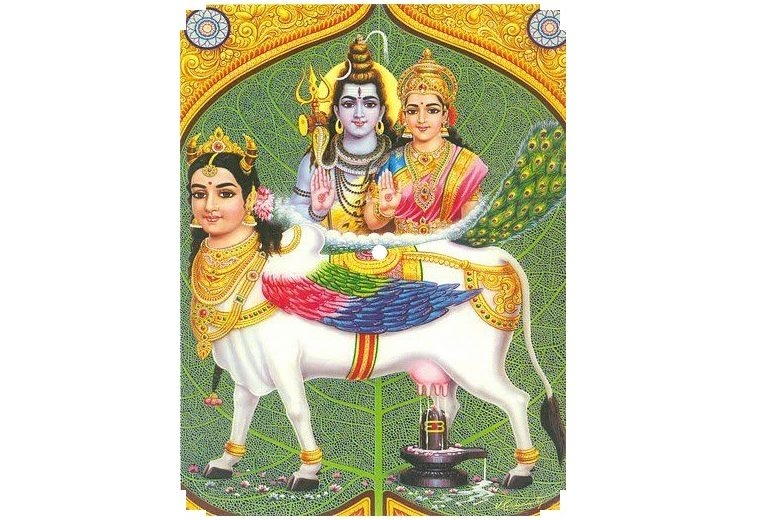
Photo: Sahapedia - Kamadhenu -
The primary consort of the Hindu god Krishna is the goddess Radha. She is revered as the goddess of adoration, affection, tenderness, and devotion. She is described as the leader of the Gopis and the goddess Lakshmi's avatar (milkmaids). She makes an appearance as Krishna's girlfriend and friend when he is young. Radha is referred to as Krishna's wife and the eternal partner in numerous traditions and texts. As a supreme goddess, Radha is viewed as Krishna's female polar opposite and inner power (hladini shakti), who dwells in Goloka, her heavenly home. It is stated that Radha travels with Krishna in all of his incarnations.
Only Radha is revered as the highest deity in the Radha Vallabh Sampradaya and the Haridasi Sampradaya. She is also revered in other Chaitanya Mahaprabhu-related Vaishnava-Sahajiya, Nimbarka Sampradaya, Pushtimarg, Mahanam Sampraday, Swaminarayan Sampraday, and Gaudiya Vaishnavism movements. Radha is also referred to as Krishna's feminine counterpart. The annual Radhashtami celebration honors Radha's birthday.
She has influenced a great deal of literature, and the Raslila dance that she performed with Krishna has influenced a wide range of performance art.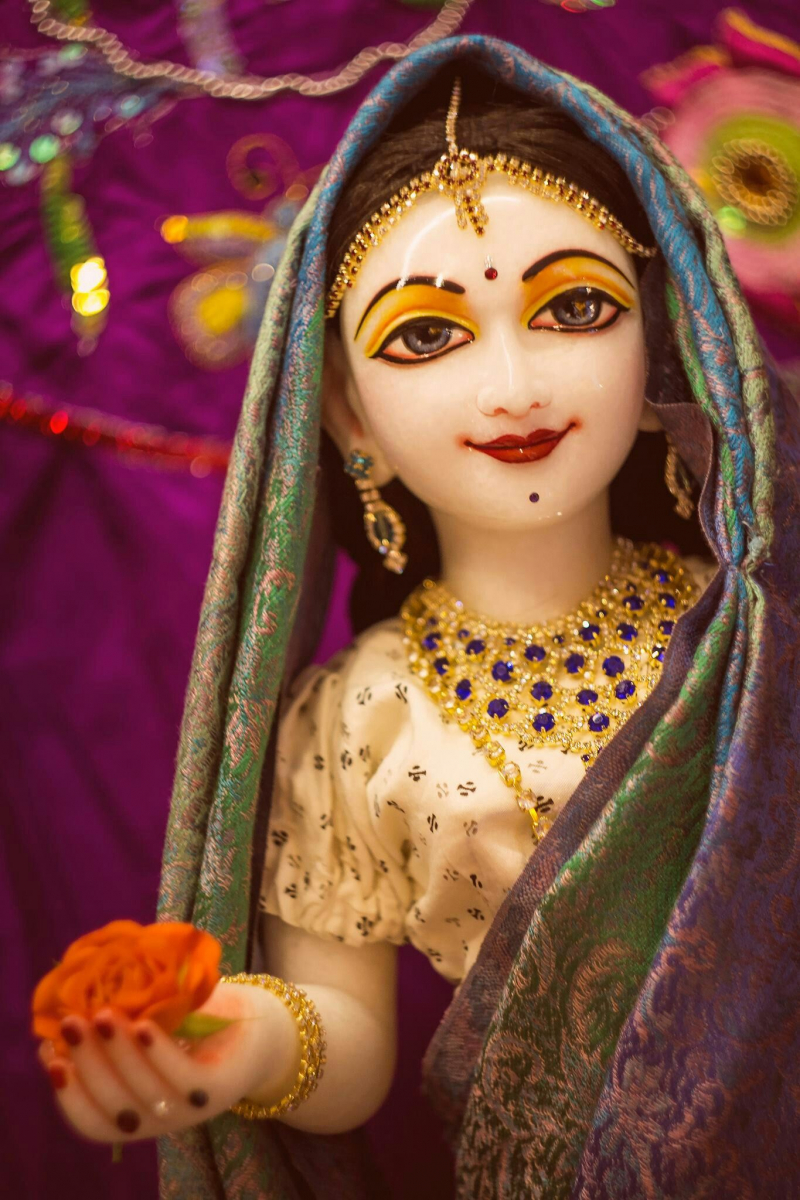
Photo: Pinterest - Radha Rani 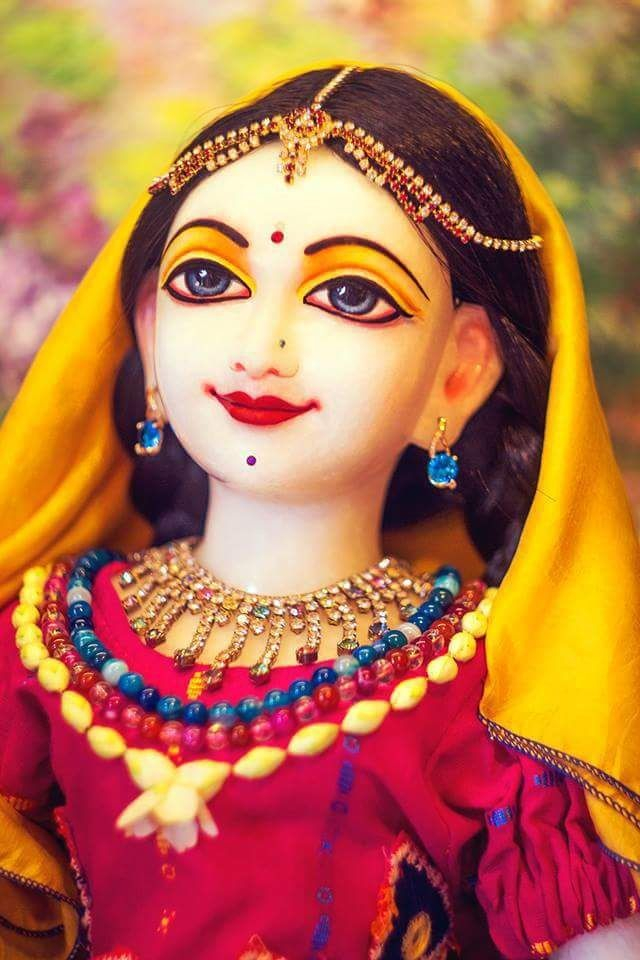
Photo: Pinterest - Radha Rani











